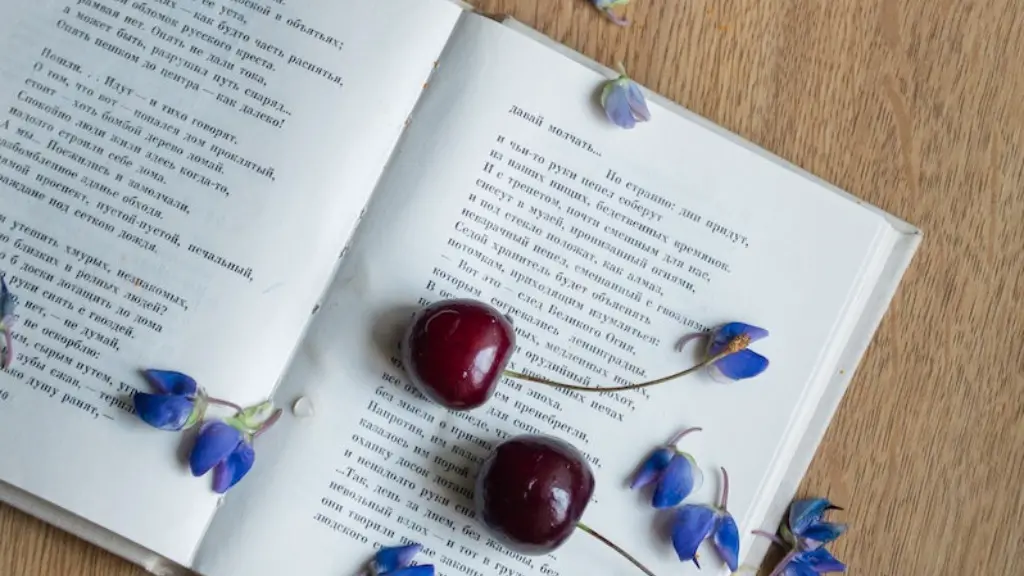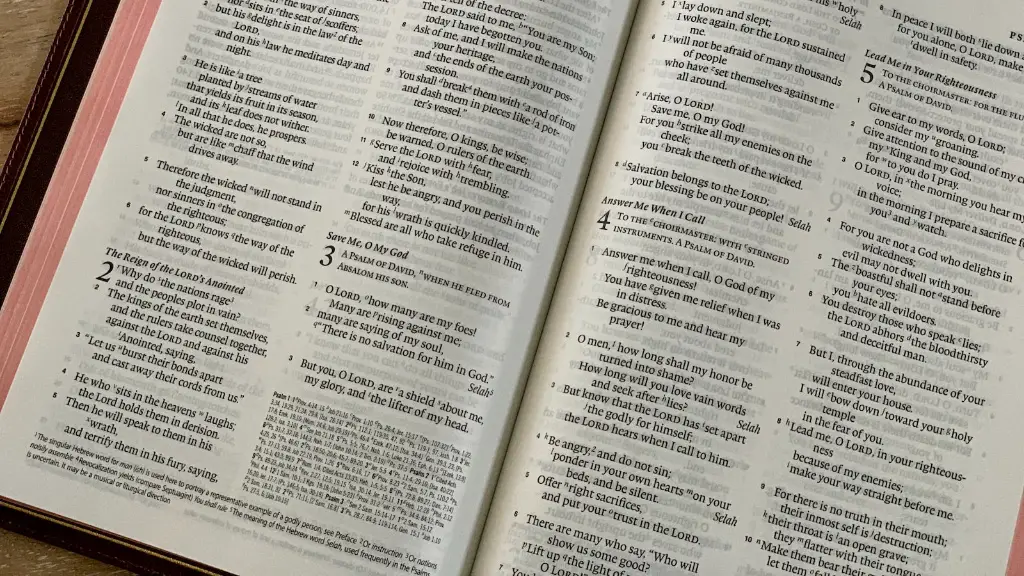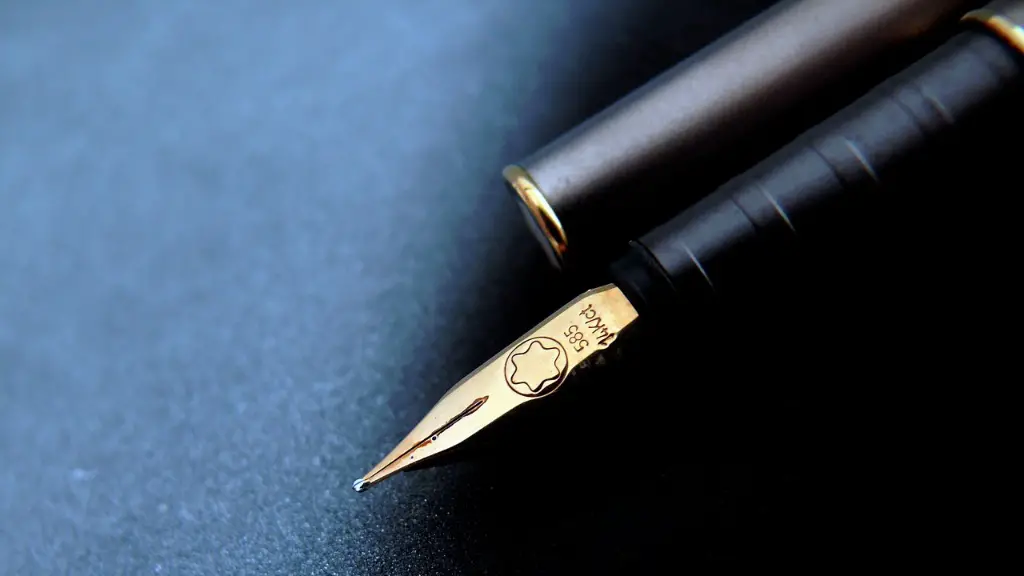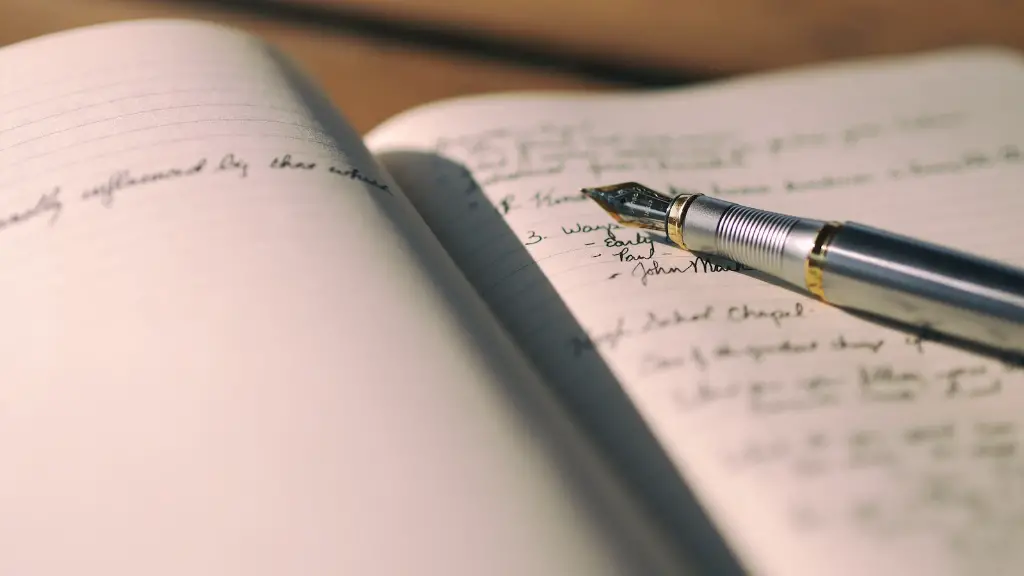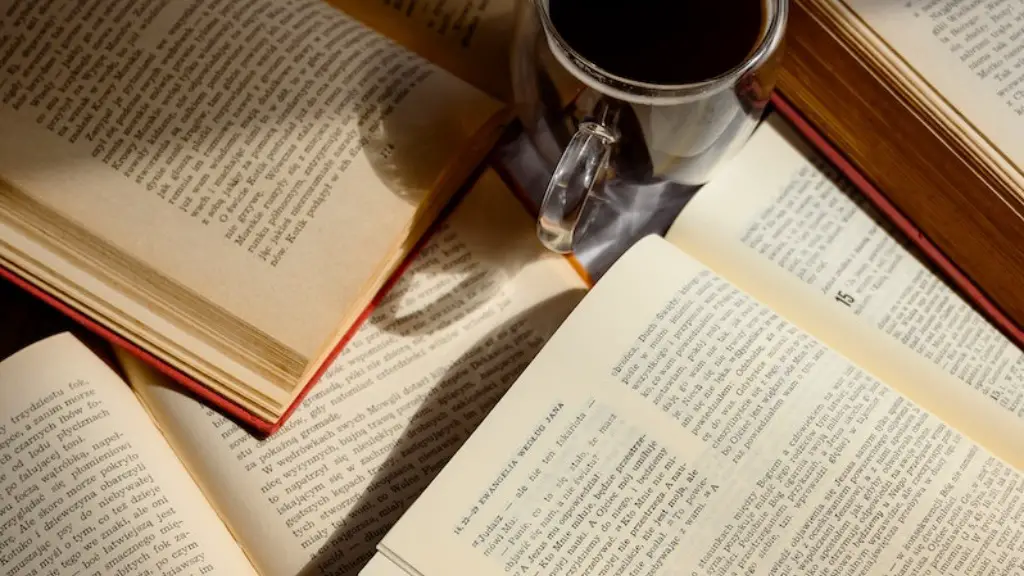An Introduction to Rhythm in Poetry
Understanding and identifying rhythm in poetry can be a difficult task for any reader, whether novice or seasoned. Understanding what makes a poem rhythmic can help readers get to the heart of the poem, as rhythm is an essential element of poetic composition. As a reader, one should appreciate and understand the rhythm of a poem to truly comprehend its meaning.
Rhythm helps to give structure to a poem and gives it a certain sense of balance and flow. It can also be a great source of meaning for readers and many have found their ability to understand poetry has improved significantly when they have become conscious of the rhythms of a poem. Poetic rhythm can be found in a variety of poems, from the sonnets of William Shakespeare to the free verse of Walt Whitman.
Analyzing the Rhyming Structure
One of the first steps to identifying rhythm in poetry is to examine the rhyme scheme of the poem. A poem’s rhyme scheme is an indicator of its rhyme and rhythm. Rhyme is when two words or lines of poetry have the same end sound. For example, in Shakespeare’s sonnet “Shall I Compare Thee to a Summer’s Day,” the first two lines of the poem, “Shall I compare thee to a summer’s day? / Thou art more lovely and more temperate,” end in the same sound, so they are considered to rhyme. The rhyme scheme of this sonnet is abab cdcd efef gg. In other words, each pair of lines (labeled A and B) within a stanza of the poem rhymes.
Examining the rhyme scheme can help determine the flow and the type of rhythm a poem uses. A poem with a more structured rhyme scheme is likely to have a structured rhythm. For example, the structure of Shakespeare’s sonnet creates a set rhythm of iambic pentameter (five pairs of unstressed and stressed syllables). On the other hand, a poem with a more free-flowing rhyme scheme can be expected to have a more free-flowing rhythm.
Identifying the Metrical Pattern
In addition to analyzing the rhyme scheme, one should also consider the metrical pattern of a poem. The metrical pattern is the pattern of stressed and unstressed syllables that constitutes the poem’s meter. A meter can be defined as a pattern of stressed and unstressed syllables in a line of verse. Common meters of poetry are iambic pentameter, dactylic hexameter, and anapestic tetrameter.
Identifying the metrical pattern is essential in understanding the rhythm of a poem. These patterns help create a rhythm that can be heard when the poem is read aloud. A meter can provide structure and flow, as well as lend a pervading sense of rhythm. For example, the meter of Shakespeare’s sonnet is iambic pentameter, i.e. five pairs of unstressed and stressed syllables. When read aloud, these five pairs of syllables create a distinct beat and rhythm.
Understanding Iambic Pentameter
When discussing rhythm in poetry, the most common meter that comes up is iambic pentameter. This meter consists of five pairs of syllables (also known as feet) that alternate between unstressed and stressed syllables. For example, “shall I compare thee to” is an example of iambic pentameter. The first syllable is unstressed, the second is stressed (sh-all), and so on. Iambic pentameter is a very common meter in English poetry and is used in many of Shakespeare’s sonnets.
Iambic pentameter is an important meter to be aware of when analyzing the rhythm of a poem. It helps to create structure and flow, as well as provide a pervading sense of rhythm. Moreover, it is a great tool for aiding in the understanding of a poem’s meaning. For example, in a sonnet by William Wordsworth, he uses iambic pentameter to emphasize the idea of “worlds in one”, as nearly all of the lines in the poem begin with an unstressed syllable and end with a stressed syllable – “in worlds—not world—in one.”
Considering Patterned Repetition
Patterned repetition within a poem can also be a great indicator of the poem’s rhythm. This could refer to the repeated use of a certain sound or the repetition of certain words or phrases. Repetition is often used in poetry to emphasize and hammer ideas home, and in this way, repetition can also be used to create and emphasize rhythmic structure. For example, the repeated use of “shall” in William Wordsworth’s poem, “The World Is Too Much With Us,” emphasizes the idea of “too much.” The repeated shall is also used to create an iambic pentameter.
Patterned repetition is a crucial element in understanding the rhythm of a poem. It helps to add structure and flow, as well as emphasize certain ideas or concepts. Knowing how to recognize this type of repetition can help readers better comprehend the poem’s underlying message and its structure.
Analyzing the Structure of Lines
A final way to identify the rhythm of a poem is to consider the structure of the lines. Line length can be a great indicator of the type of rhythm a poem uses. Generally speaking, short lines tend to create a fast-paced rhythm, whereas longer lines tend to create a slower, more relaxed rhythm. Variation between short and long lines can also help create a sense of structure and balance. In addition, caesura (or pauses) within the line itself can also help to create a rhythm.
For example, in Wilfred Owen’s poem, “Dulce et Decorum Est”, he uses a variety of line lengths to create a sense of urgency and chaos. The first two lines of the poem are “Bent double, like old beggars under sacks, / Knock-kneed, coughing like hags.” These two lines consist of longer, more flowing lines, which create a slower rhythm. Owen then transitions to extremely short lines, such as “Gas! GAS!” to create a fast-paced, urgent rhythm.
Analyzing the Sound of Words
In addition to the structure of the lines, one should also consider the sound of words themselves. In many poems, the words themselves can create a rhythmic feel in the poem, even if the words are not strictly adhering to any particular meter. For example, Robert Frost’s poem, “Mending Wall,” makes use of longer vowel sounds and shorter consonant sounds to create a subtle, yet powerful underlying rhythm. Such techniques can help to create a feeling of movement and continuity within the poem, even without a strict metrical pattern.
When analyzing the rhythm of a poem, it is important to consider not only the structure and flow of the poem, but also the sound of the words. The way the words sound can have a subtle yet powerful effect on the overall atmosphere and meaning of the poem. Being aware of these sound effects can help readers to better appreciate and understand a poem’s underlying message.
Considering Rhythm in Context
When attempting to identify the rhythm of a poem, it is important to consider the poem in its entirety. While a poem may have a particular rhyme or meter, the poem’s overall rhythm may be different. For example, a poem may use iambic pentameter in some sections, and yet, certain stanzas may create a sense of irregularity or variation in the rhythm. It is important to consider these variations in order to truly comprehend the poem’s message and rhyme.
When discussing rhythm in poetry, it is important to remember that a poem can have many different types of rhythm, and it is up to the reader to determine what type of rhythm a poem is utilizing in order to truly understand it. Knowing how to identify and analyze rhythm is essential in any good reader’s repertoire.
Tips for Identifying Rhythm
When trying to identify the rhythm in a poem, there are a few tips to keep in mind. First, it can be helpful to read the poem out loud, as this can help to identify the poem’s flow and structure. Second, it is important to consider the poem’s rhyme scheme, as this can often be a great indicator of the poem’s rhythm. Third, it is important to consider the poem’s metrical pattern, as this can also be a great indicator of the poem’s rhythm. Finally, it is important to consider the sound of the words, as this can have a subtle but powerful effect on the poem’s rhythm.
Recognizing Rhythmic Variations
In addition, it is important to be aware of various rhythmic variations within a poem. While a poem may have a particular meter or rhyme scheme, the poem’s overall rhythm may be quite different. It is important to be aware of and to consider these variations in order to properly interpret the poem’s meaning.
Identifying and analyzing rhythm can be a difficult task, especially for novice readers. However, with practice and dedication, anyone can learn how to identify and appreciate the rhythm of a poem. Knowing how to identify and appreciate poetic rhythm can lead to a better understanding of and appreciation for poems, as well as aid in one’s understanding of poetic language, structure, and flow.
Exploring Advanced Rhythm Concepts
In addition to analyzing the basic elements of rhythm in poetry, one should also consider the more advanced concepts that are pertinent to understanding the rhythm. One such concept is the notion of “syllabic emphasis,” which is the idea that certain words in a poem may have greater emphasis than others due to the length of syllables in the word. For example, in William Wordsworth’s poem, “The World Is Too Much With Us,” he uses words such as “greedily” and “frightened” in order to add emphasis to his message. This is done by utilizing the longer syllables of these words in order to create a more rhythmic line.
Syllabic emphasis can be a great tool for emphasizing certain ideas or concepts within a poem. Knowing how to identify and utilize syllabic emphasis can help to create a more powerful and effective poem.
Exploring Assonance and Alliteration
Finally, one should consider the concept of assonance and alliteration, which are both techniques involving the repetition of certain sounds. Assonance is the repetition of vowel sounds, while alliteration is the repetition of consonant sounds. These techniques can be used to create a rhythmic pattern and to emphasize certain words or concepts within a poem. For example, Walt Whitman’s poem “Song of Myself” makes use of alliteration in order to emphasize certain points and to create a rhythm.
Knowing how to identify and make use of assonance and alliteration can help to create more effective and powerful poetry. These techniques can add emphasis and create a rhythm that can help to create an effective poem.
Conclusion
Understanding and analyzing the rhythm of a poem is an essential skill for any reader of poetry. Knowing how to identify and appreciate poetic rhythm can vastly improve one’s understanding of a poem and lead to a better appreciation of
